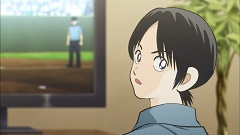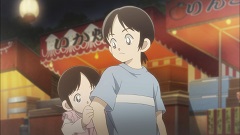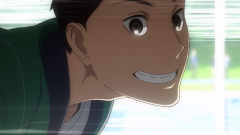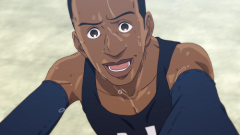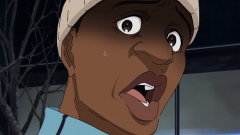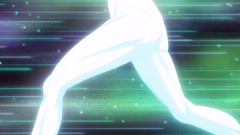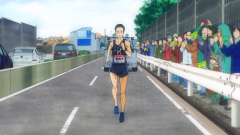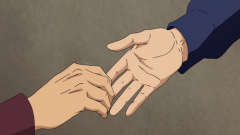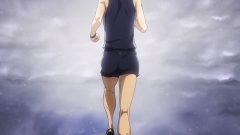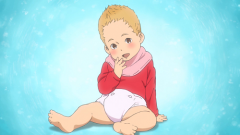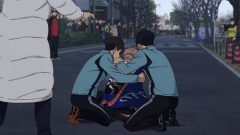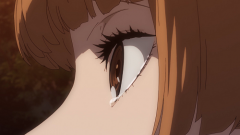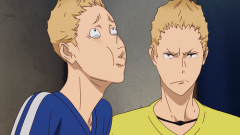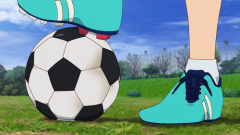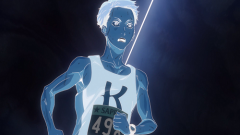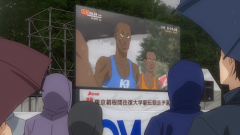How long is this prologue going to last, I wonder? Not that I’m complaining – Mix is probably my favorite spring series so far, even if it’s not the boldest or best-looking of the bunch. My current assumption is that the bulk of the story will be spent chasing the Koushien dream, but with Meisei’s middle school having qualified for the Tokyo Tournament, that goal seems a long way off. And the main characters are only in their second year, so we’re likely to get a full season with Touma as a starting pitcher before he even enters high school. This is all sort of worrisome, as Mix has just 80 chapters under its belt, and 9 have gone into these first four episodes. I’d hate for a series like this one, which takes its time in peeling back the layers of its cast, to run out of material too quickly. But perhaps I’m thinking too long term, as before the story can move forward, Nikaidou’s stranglehold on the title of starting pitcher will have to be loosened.
Something is clearly up with Nikaidou, despite his winning streak. The Tachibana brothers are quick to make light of his pitching ability, but this is owed more to their prodigious talent than anything else. Souichiro’s head isn’t so high in the sky, though, that he can’t sense when his battery mate is having an off day. At a practice shortly after their victory in the prelim finals, Sou remarks to his brother that there’s even less juice behind Nikaidou’s pitches than normal. This doesn’t set off any alarm bells for the boys, but it should for the viewers at home. Coupled with his early departures from practice and his absence from the early innings of the team’s current game, it’s clear that Nikaidou is hurt. In fact, he may be dealing with a lasting illness, which would totally recontextualize the preferential treatment he’s been given thus far. His obnoxious father and nepotistic coach may simply want him to experience as much playing time as possible, before his sickness advances too far.
There are a handful of intriguing baseball moments here that don’t involve Meisei’s ace, such as the introduction of new rival Nishimura. He gets a freeze frame for his first appearance, signaling that he’ll be important down the line (an opponent lasting into the show’s high school years, perhaps). Nishimura takes an interest in Touma after watching him throw a bullet from third to first, which was one of the episode’s better moments from a production standpoint. I nearly felt first baseman Imakawa’s recoil through my screen, making Touma’s rocket arm a tangible trait rather than a subject of much conversation. Most of the non-athletic moments weren’t animated nearly as well, but they were a delight to watch anyway, as has been typical of Mix so far. My particular favorite was the teasing between Otomi and Touma, where she feigns surprise at his preparation for a big interim exam. The secret ingredient to this scene is that she enters the room twice: once to get homework help from Sou, and a second time after the reality of her stepbrother’s uncharacteristic studiousness kicks in. Their banter is kept light for now, but we’ll be in for some stepsibling romance down the line if this keeps up. Despite the taboo, that’s the element of the show that most piques my interest, so I hope none of it is omitted in the transition from page to screen.



